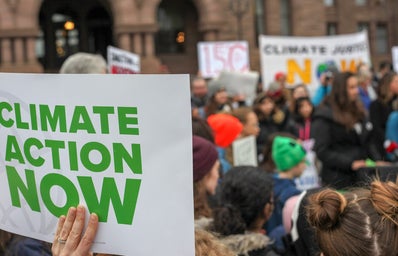Environmental crises are most heavily felt by marginalized communities. Indigenous peoples are at the frontlines of feeling the effects of climate change, which has been the result of centuries of western colonialism and industrialization. Native communities have lived on their lands for thousands of years and have adapted their lifestyles in ways that allow them to live with their environments and maintain them sustainably.
These ways of life have been threatened and greatly altered by the persecution, forced removals, and discrimination posed by Western people. Where once American western forests were properly managed by tribes so that wildfires burned at healthy rates, today we are seeing a gigafire engulfing the west coast. Plains buffalo once numbered in the millions in North America, sustaining and shaping the indigenous tribes of the Great Plains. Though they are beginning to make a comeback, buffalo will never be able to recover completely from the overhunting from American settlers, many times to deliberately deprive Native Americans of resources. The effects of issues like these are numerous and pose threats to indigenous groups globally today.
Here are just a few of many indigenous activists working and leading the movement for climate and environmental justice.
Nemonte Nenquimo
Named as one of the Most Influential People of 2020 by Time magazine, Nemonte Nenquimo has inspired indigenous communities everywhere in the fight to protect themselves and their lands. A member of the Waorani community native to the Amazonian region of Ecuador, Nenquimo led her people through a successful lawsuit against the Ecuadorian government’s encroachment on their land. In 2019, the Waorani communities came together with Amazon Frontlines to sue as they had never consented to oil exploration by the Ministry of Energy and Non-renewable Resources. The judge panel ruled in favor of the Waorani’s claim, protecting their homes and their forest and affirming the importance of informed consent.
She recognizes the need for collaboration across all fronts, especially among indigenous groups. Nenquimo is a founding member of the Ceibo Alliance, which is an indigenous coalition that supports communities’ environmental and cultural conservation projects. Nenquimo has continued to be a leader for her people, winning another lawsuit against the Ecuadorian government for increased protections for their community in the wake of the COVID-19 crisis.
Xiye Bastida
At only 18 years old, Xiye Bastida has already helped to organize and spark a global climate movement. After being inspired by Greta Thunberg, Bastida became a leader of the Fridays for Future youth climate strike that aims to put pressure on lawmakers to take action against climate change. Bastida is a member of the Otomi-Toltec nation and was raised in Mexico. She moved with her family to New York when she was 13 to escape from climate pressure in her hometown through years of intense flooding and droughts.
Bastida has committed herself to helping mobilize other young voices in advocating for climate justice. She is an active member of several other groups, including the Sunrise Movement and the Peoples Climate Movement and works to connect with and educate people in her community about environmental issues. “We are the last generation that can prevent catastrophic runaway climate change. Anything we ever achieved started with someone imagining it first,” she says in a Mission 2020 video.
Winona LaDuke
Winona LaDuke has been advocating for the environment and indigenous peoples for decades. A graduate of Harvard University, LaDuke has worked to voice both Native American economic and environmental concerns and is renowned for working on issues related to sustainable development, renewable energy, and food systems. She is an Ojibwe member of the Anishinaabeg and helped her people to establish the White Earth Land Recovery Project after a dismissed lawsuit to recover promised Anishinaabeg lands. The reservation-based project focuses on working in areas such as promoting tribal food sovereignty, energy justice, and cultural preservation.
LaDuke has also helped to found and is currently the executive director of Honor the Earth, an indigenous environmental advocacy organization that works to raise awareness, support and resources for Native environmental issues through the use of media, the arts, and education.
Tokata Iron Eyes
The construction of the Dakota Access Pipeline inspired thousands to take up the stand and defend native lands, including a surge of youth activists. Tokata Iron Eyes, a member of the Standing Rock Sioux tribe, was 12 years old when she first publicly spoke out in resistance to the pipeline, which would directly impact her people as it ran about a mile outside of their reservation. The pipeline posed the danger of oil spills that would threaten the tribe’s health, water, and environment. “As an Indigenous people, I know no other way. My grandmother has taught me how to live off the earth,” Iron Eyes said in an interview with Teen Vogue in 2018.
Iron Eyes was featured in a video that kickstarted the “ReZpect Our Water” social media campaign, of which she was one of the youth leaders. This helped to bring increased public awareness of the issues the Standing Rock Sioux faced and build a momentum of support for these Native communities. She has continued advocating for climate justice in her community and elsewhere, including teaming up with Greta Thunberg to lead several protests.
Tara Houska
In a TED talk she gave at TEDWomen 2017 on her experience at the Standing Rock protest, Tara Houska emphasized that, “When you aren’t viewed as real people, it’s a lot easier to run over your rights.” Houska is Couchiching First Nation and a tribal attorney in Washington, D.C. who works as an advocate on behalf of tribal nations to the U.S. government. She also is a former advisor to Bernie Sanders on Native American affairs and a founder of the non-profit Not Your Mascots which tackles the negative stereotyping of Native Americans.
In addition to participating in the Standing Rock protests, Houska has also worked on several other pipeline protests and is a proponent of calling for major banks to divest from them. She highlights the importance of collaboration and utilizing peoples’ diverse perspectives in developing tactics and finding solutions to environmental justice issues.
Dina Gilio-Whitaker
Dina Gilio-Whitaker of the Colville Confederated Tribes is an author and scholar whose work is dedicated to indigenous environmental justice. Her most recent book As Long as Grass Grows explores the history of the environmental injustices faced by Native Americans. Gilio-Whitaker’s book argues that we need to change the focus of environmental justice and put it through the lens of indigenous people. She discusses how today’s environmental justice movements are commonly framed as issues stemming from economic and racial means, whereas Native people’s experiences of environmental injustices go much deeper than that, into their history with settler colonialism and their historical relationship with their lands. Gilio-Whitaker advocates for today’s environmentalists to become more educated on the history of indigenous activism and to utilize collaboration between groups in the common fight for a sustainable world.



